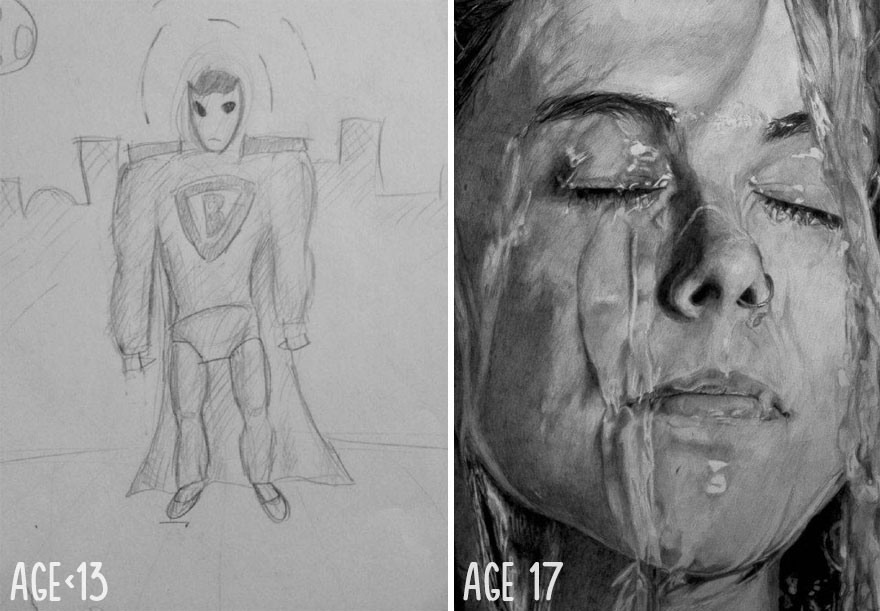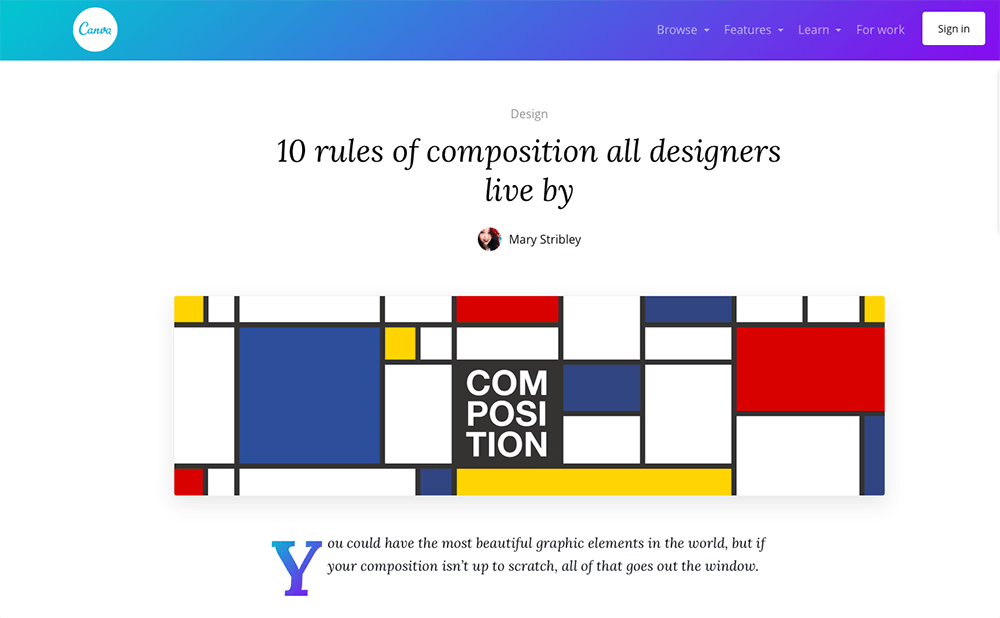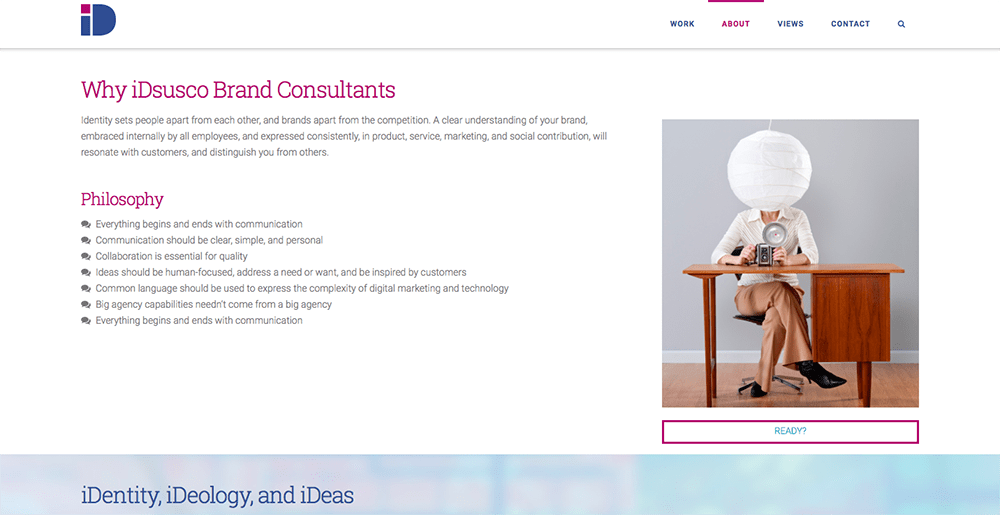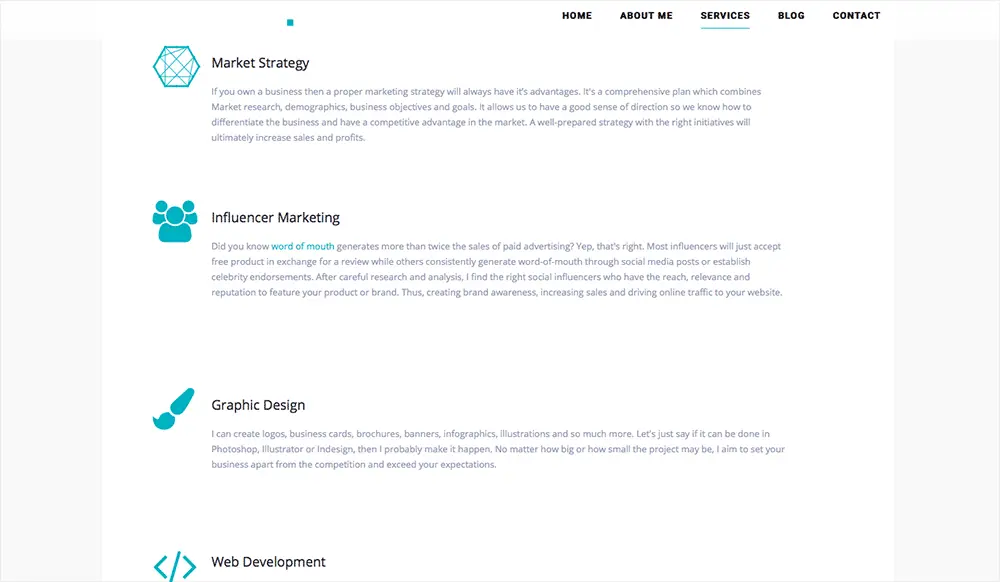The amount of talented and well-rounded web designers and developers is astounding, but do all of them have a background in traditional art, art history, or the like? Today, after some research, we will discuss whether it is necessary to know how to create traditional art first.
A Skill or Just Talent?
Many people’s interpretation of what a designer and an artist really does are wrong. Perhaps artists are born with their love and talent for the arts, and designers must work at what they do to develop their skill. These are both half-truths. Artists can be more drawn to art itself, but their talent isn’t necessarily something that they don’t need to work on or improve. As an artist, it is a discipline and skill that must be put to use in practice, in order to gain more skill, just like training in the gym, muscle will only build with hard work. No person is able to know all of the fundamentals of art and able to sketch out a person with the correct proportions in one try. The same goes for designers, whom must develop their skills in different ways, such as learning new techniques and skills to problem-solve, and create something that is meant for their audience or client – or both.
If You Can’t Draw, Learn More About Design
Creative Market offers the basic elements of design that you should know about, if you have no artistic background. These are the very basic things you should know as a designer, and this can help you become more aware of what makes designs successful, or not. By familiarizing yourself with elements such as balance, harmony, dominance and emphasis, you can instantly improve your next design by implementing these elements.
Rules of Composition
Besides the elements of design, there is another extremely important list of rules for designers, whether you have a background in traditional art or not. Canva offers an extremely helpful, resourceful, and educational article on important things to note when creating designs. Whether this is a nice refresher for things you’ve already learned, or a new tool to implement into your own designs that you didn’t know were important before, this article is for anyone looking to improve their work. Don’t be modest, everyone can use a little extra help! With composition rules to remember such as the rule of thirds, balancing your elements, or taking into account scale and hierarchy, this article can help to implement more successful designs that will appear to flow smoothly, have a good sense of design and a cohesive idea, and have colors that complement instead of clash. It’s small details like these that create great designs, and it is far more imperative to web development than knowing how to paint an apple from life is.
Communication is Key!
Just like any personal relationship’s necessity to have good communication, any business related relationship has the same idea surrounding it. As a designer, it is imperative to have constructive communication with the client. Designers create with the sole purpose of bringing to life the visions that the clients have, but cannot create themselves. The main vision of those clients is to have a clear message and idea spread to their audience, and as a designer you must convey that message as clearly as possible. It is not up for interpretation like traditional art is. A painting in a museum can mean one-thousand different things to one-thousand different people, but a designer must create with the intention to convey the same idea to everyone. iDusco demonstrates on their website that communication is the number one, most important piece to the puzzle when it comes to the design business, and they’re right. As long as a designer has learned a sense of good communication, having a background of traditional art becomes less and less of an issue.
Find What You’re Good At
The toughest part about careers that have many different areas to specialize in, is finding your niche. As a designer, are you more skilled at creating logos? Do you find happiness when designing or developing a website? These are questions to ask yourself, and although you may think that with web design, you would need to know how to draw, it would surprise you how much you can truly achieve with software like Photoshop, Illustrator, etc. If you come to find that you are good at creating typography for websites, then that can be your niche. Improve upon that skill, and learn how to create great typography by using digital art, or simply improving your sketching skills in lettering. Either way, with practice, comes skill.
Execution and Technique
It’s possible that as a web developer or graphic designer, you simply don’t create traditional art. This isn’t absolutely necessary to be good at your job! Take Chelsey Moter, for example. She is a graphic designer and web developer, and has mentioned before that she can’t draw, and instead uses her software and digital art skills to create amazing designs for her portfolio and business. She suggests that by using an image or photograph, tracing it with the pen tool in Adobe Illustrator or Adobe Photoshop, you can create designs of your own without the need for sketching or jotting down loose ideas of the design on paper first, and scanning it onto your computer. Of course, that is a great and valuable technique, but what truly matters is what you can offer and produce in your field, such as graphic design or creating a website. So no, it’s not entirely necessary to have a background of traditional art, it is about you having your own technique, and executing great work, no matter if you sketched or painted the design on paper at first or not. Moreover, it can be a great addition to your creative process and ultimately can be beneficial to yourself, your portfolio, and your business.
The post Web Design: Is it Necessary to Know How to Create Traditional Art First? appeared first on Web Design Blog | Magazine for Designers.
via https://ift.tt/2NLnDNV






No comments:
Post a Comment